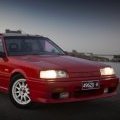Legislations scheduled that may affect importation
Announcements
-
Similar Content
-
Latest Posts
-
This would be the only reason the dogbone would flex - pushing/pulling it based on unequal load. Not sure how to check for this besides putting a gauge on each bleed nipple and giving it the berries to see what pressure it reads.
-
I did think of this - i unbolted the caliper from the dogbone so it was just resting on the disc and the result was the same - the caliper spread about the disc. Ill do this again and get some video this time. I did also use a digital caliper when fitting the kit - the misalignment of the disc to the caliper was <0.5mm. The shims I have are 0.5mm so i wasnt really able to improve alignment. Seemed pretty good off the bat really. I tell ya - this has me thoroughly confused
-
Yeah, I just watched the video also (I don't generally watch embed videos because I have to enable them in NoScript before doing so). That's not "caliper flex" in the classic sense. Caliper flex is where the body of the caliper spread because it is not stiff enough to resist being pushed apart by the forced imposed at the piston/pad interface. That whole caliper is moving. That probably means that the dogbone is flexing, which would point to it being too flimsy and/or simply misaligned so that the caliper has no option but to try to centre itself on the disc. The pedal sinking to the floor would have to be unrelated.
-
With the caveat that personal imports need to be owned by the person who is importing the car (not a family member, the very same person) and you must be resident outside of Australia for a year. As this one is >25 years, you just follow this procedure, which takes 0.00001 bogomips of googling to find. https://www.infrastructure.gov.au/department/media/news/how-import-your-older-vehicle-25-years-or-older
-
By Dose Pipe Sutututu · Posted
my bro-science approach tells me there's unequal force being applied from either side, hence the movement. If equal force is being applied, one would assume there would be 0 movement.
-







Recommended Posts
Create an account or sign in to comment
You need to be a member in order to leave a comment
Create an account
Sign up for a new account in our community. It's easy!
Register a new accountSign in
Already have an account? Sign in here.
Sign In Now